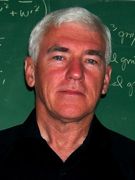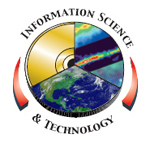
Please Note: The content on this page is not maintained after the colloquium event is completed. As such, some links may no longer be functional.
David Emmitt
President and Senior Scientist
Simpson Weather Associates, Inc.
Simulating observations for use in Observing System Simulation Experiments
Wednesday, April 11, 2012
Building 3 Auditorium - 11:00 AM
(Coffee and cookies at 10:30 AM)
Observing System Simulation Experiments (OSSE) are designed to provide the interested agency (e.g. NASA, NOAA, DoD) with a quantified estimate of the incremental impact of a new observation on a numerical prediction model, most commonly a weather prediction model. The new observations could result from the deployment of a totally new sensor package or an improved sensor package. OSSEs also provide a means of assessing the advantages of various data assimilation schemes which may need optimal tuning to a new observation. Regardless of the objective of the OSSEs, they involve large amounts of data from a Nature Run, even larger derived atmospheric property files for instrument simulation and the simulated observations themselves.
Most of the OSSEs done to date for NASA have been used to assess the potential impact of a space-based Doppler Wind Lidar. A Doppler Lidar Simulation Model (DLSM) was initially funded by NASA in support of the LAWS concept. Subsequent development has been funded by NOAA and DoD. IN this colloquium, the DLSM will be used to explain the steps involved in simulating observations and evaluating their impacts as a function of sensor configuration.
Dr. G. David Emmitt is the President and Senior Scientist at Simpson Weather Associates in Charlottesville, Virginia. He is also a "Scholar in Residence" at the University of Virginia. Dave has been active in the design and evaluation of Doppler Wind Lidar (DWL) missions beginning in the 1980's with the Laser Atmospheric Wind Sounder (EOS). Other space based DWL missions included SPARCLE, GWOS, and most recently WISSCRS. While pursuing a space-based mission, he is PI on two airborne DWLs: the Navy's Twin Otter Doppler Wind Lidar (TODWL; 2003 - present) and the P3DWL on both a Navy P3 and a NOAA P3 (2008 - present). Given the potential of generating large amounts of data requiring contextual processing, Dave has been working closely with the Data Information System community starting with the EOS-DIS and most recently with the AMS committee on Interactive Information Processing Systems (now the EIPT).
IS&T Colloquium Committee Host: Jacqueline LeMoigne
Sign language interpreter upon request: 301-286-7040
